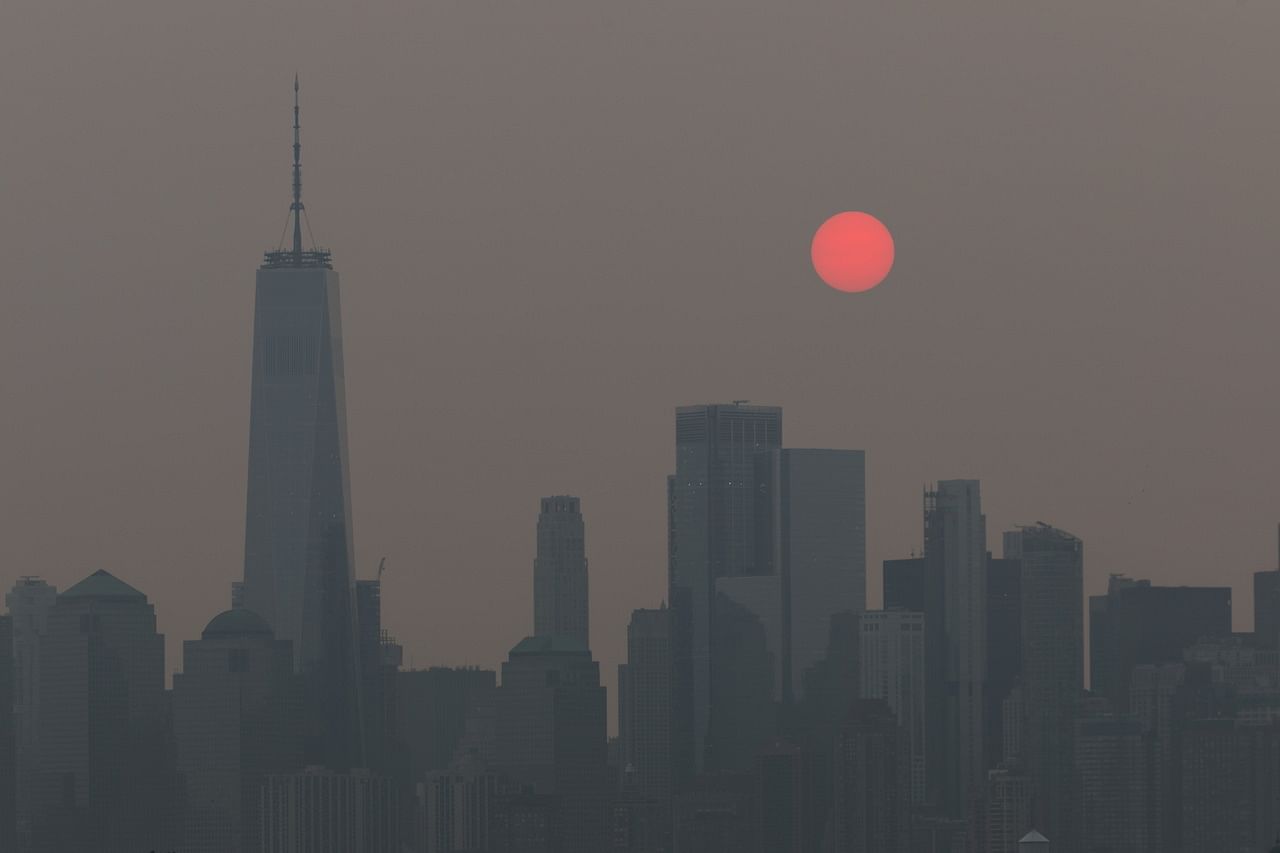How wildfire smoke spread across the US
Sign up now: Get ST's newsletters delivered to your inbox
Follow topic:
OREGON (NYTIMES) - Wildfire smoke from Canada and the western United States stretched across the continent this week, covering skies in a thick haze and triggering health alerts from Toronto to Philadelphia. Air quality remained in the unhealthy range across much of the east coast on Wednesday (July 21) morning as the haze pushed southwards.
In recent weeks, a series of near-relentless heatwaves and deepening drought linked to climate change has helped to fuel exploding wildfires.
In southern Oregon, the Bootleg Fire grew so large and hot that it created its own weather, triggering lightning and releasing enormous amounts of smoke. More than 80 large fires are burning across 13 American states, and many more are active across Canada.
Now, the effects are being felt thousands of kilometres from the flames.
As the smoke moved eastwards across Toronto, New York and Philadelphia on Tuesday, concentrations of dangerous microscopic air pollution known as PM2.5 (because the particles are less than 2.5 microns in diameter) reached highs in the "unhealthy" range for most of the day.

<p>The sun, appearing orange due to smoke haze from forest fires, rises behind the skyline in New York City, New York, U.S., July 21, 2021. REUTERS/Bjoern Kils/New York Media Boast</p>
PHOTO: X07507
Minnesota was heavily blanketed by smoke from wildfires burning across the Canadian border, with the city of Brainerd and others recording "hazardous" levels of pollution, the highest designation of concern from the US Environmental Protection Agency.
"What we're seeing here today is the convergence of several smoke plumes," said Dr Nancy French, a wildfire scientist at Michigan Technological University, noting that much of the US was experiencing some amount of haze, even as the highest surface pollution swept across the midwest and north-east.
On Tuesday, eerie orange sunsets were coupled with scratchy throats and watering eyes for many people across the two regions.
Fine particulate matter, which is released during wildfires (and also through the burning of fossil fuels), is dangerous to human health. Breathing high concentrations of PM2.5 can increase the risk of asthma attacks, heart attacks and strokes.
It is not unprecedented to see smoke travel such long distances, said Dr Roisin Commane, an atmospheric scientist at Columbia University, but it does not always descend to the surface.
Dr Commane said people should avoid going outdoors in high-pollution conditions, and especially avoid strenuous exercise. She also suggested that wearing filtered masks can provide protection for those who cannot avoid the outdoors.
"A lot of the masks people have been wearing for Covid-19 are designed to capture PM2.5," she said, referring to N95-style masks. "That's the right size to be very useful for air quality."


